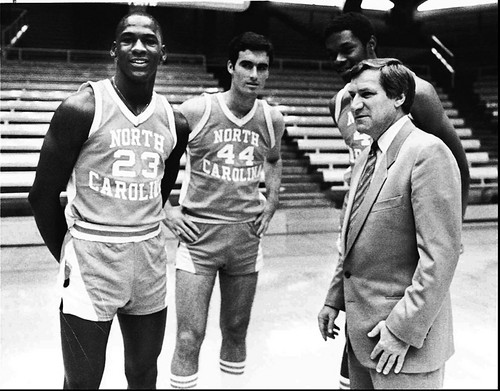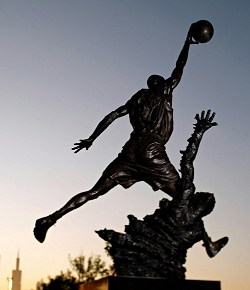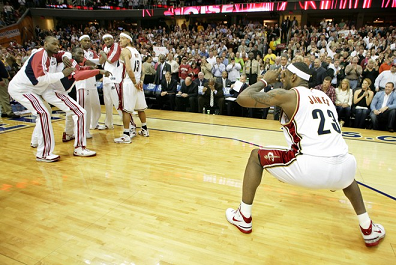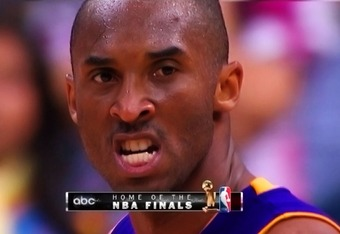
Matt Cavallaro has worked in the Strength and Conditioning Departments of both Northeastern University and Boston University as an intern and graduate assistant respectively. He currently lives and works in Sydney, Australia as a teacher and coach at Knox Grammar School. He is also the Co-Owner and Head Strength Coach for Athletes United - a training and recruitment service for Australian athletes interested in competing at American universities.
I came to Australia with some interesting perspectives on their state of basketball. Australian players are popping up all over the place in the States with increasing regularity and success. I was curious as to how this faraway country, notable for beaches and kangaroos was becoming a source for some real basketball talent.
In my initial observations of player development I missed out on a lot of really useful information by comparing the Australian system to the US system. I wanted to poke holes in everything that was going on for development of players in Australia simply because it wasn't like the US. I was being the ugly American and it was an obviously flawed way to view the situation.
Australia isn't the US when it comes to sport. This is most clear when looking at the populations of the two countries. The US? Over 300 million. Australia? Just over 20 million (on an island that is nearly the same size as the lower 48). This changes everything.
Australia is a sporting country. There are competitions in nearly every sport at nearly every level. They have just as many professional sports as the US - just that Rugby (league and union) and Aussie Rules Football (AFL) are king, with soccer (similar to the US) creeping up in popularity. Basketball is a secondary sport with a fledgling professional league. There is no real elite-level amateur competition like the Div 1 system in the US. Throw into the mix that basketball isn't offered at most high schools, forcing kids to join a local club, and you have a drastically different system.
My first reaction was that it was a bad system, but really it is just a different system.
So how has Australia been able to produce talent increasingly valuable to US colleges and professional teams?
Similar to my experience with baseball in Australia, another secondary sport here with small relative participation which is increasingly producing players competing in the US at high levels, the government is involved, creating centralized institutes of sport which identify and develop talent. These institutes of sport work to funnel this talent to the Australian Institute of Sport (AIS) and develop Australia's national teams - while farming talent out to the States from these institutes of sport is increasingly becoming effective in many ways to develop talent and maintain participation at the elite levels - a key focus of these institutes.
Again my bias for American sport, especially a love of college basketball, made it difficult for me to understand and appreciate a system which leans so heavily on government involvement and funding. But, looking more closely at the efficiency and effectiveness of the program to identify and develop talent, (a trend that is changing in the US since some embarrassing results in world competitions recently) there is something to be appreciated.
This system is well-developed for a situation where there are relatively few players participating (compared to the US) and often the best athletes are playing other sports. In effect, the government system loosely works like a single university system actively recruiting the best talent and developing players to perform at their version of the 'varsity' level - the national stage.
For coaches, the fingers of the Australian system dips into all of the clubs in that every coach at all levels needs to be certified by a centralized body ensuring a basic quality and continuity of coaching across all situations and all ages. This helps increase the likelihood that a kid trying basketball out for the first time will receive a basic level of coaching. This is important when you have such a small number of participants relative to other sports.
For the players, because there is really no amateur competition to focus your efforts on domestically, these government-run programs get their full attention - very much unlike the US where high school teams and AAU teams are constantly fighting for a player's focus. This allows for clear continuity in the development of players.
In the US, it is often the case that top players come out of high school with many bad habits due largely to playing with multiple coaches in multiple systems. Talent identification and development in the free-market system of the US is ruled by elite players being appeased in their attempts to move on to the next level and coaches focused entirely on winning. The actual development of talent ends up being secondary because tenures in which to display one's talent for players and win for coaches are far too short for development to occur at the elite levels.
In Australia, winning at the club and school level is clearly secondary to being selected and representing these elite developmental programs run and funded by the government. In these institutes coaches are focused much more on the development and retention of talent than on wins. As well, being the only team in town for talented players allows for a talent development program built on the sequential skill-mapping and benchmarking of player development over a significant period of time during a player’s most formative years.
Now I know that there are many coaches out there drooling at the thought of having so much control over the development of players - no more bargaining with AAU coaches and parents desires for their child when you're the only team in town. But, before you book your flights and pack your bags for the Land Down Under, there are also some obvious flaws to the system.
With only one central body ruling over the sport of basketball and offering a pathway to playing basketball at a high level, you end up putting a lot of faith in the development of your sport in a small number of people. In the Australian system, if you don't have the right people driving the system the whole sport falls down.
In the American system, decentralization opens up the market place to different ideas and styles. If one doesn't work, you can move on to the next one - you see this mentality in the high turnover of coaches in the US as winning becomes of increasing importance. This comes down to the euphemism of not putting all your eggs in one basket. You only need to look at the different players that NBA and college teams look for. One system may place a high value on certain types of players and another system focuses on an entirely different type. If you only have one program driving the identification of talent, players may miss out on their best opportunity because they weren't a good fit. Linked to this, with players involved with one system for the majority of their formative years, they can become limited in their styles of play and systems into which they can adapt and contribute.
As well, in this system there is no room for late bloomers or sleepers. When you only have one option, if they make a mistake on a player their chances of achieving elite level becomes miniscule.
Yet the Australian system seems to have identified some of these problems and is openly encouraging and assisting players to go the States to play in the college system. (As many other countries in many other sports have realized, the American college system is a cost-effective way to supplement their own coaching and development of talent.)
Still, I have to return to my first and most important realization about basketball in Australia. Australia isn't America. This centralized system suits the situation in Australia quite well. Again, you only have to look at the increasing number of Australian players making a splash in college basketball to appreciate this.
While such a clearly centralized program is highly unlikely to ever take hold in the US because of the overwhelming numbers of participation and money to be made, there are some changes occurring in the States. USA Basketball, where Mike Krzyzewski and Jerry Colangelo made a distinct effort to work in close accordance over the four years leading up to the Olympics, has certainly begun the process of moving basketball away from a purely free-market in developing talent to gently embracing a more centralized and stable national program. The result of which is the return of USA Basketball to the top of the international food chain.
Also, Krzyzewski was the right choice for the position of national coach for numerous reasons, but in this conversation it is most notably his ability to develop and retain talent over four years - similar in many ways to what the Australian system strives to do. There is a division beginning in college basketball (largely to do with the NBA's 'one year rule') where coaches like Calapari, who can repeatedly bring in the most talented players, are being challenged by programs who embrace the opportunity to develop players of a lesser talent not solely focused on taking their game to the NBA as fast as possible.
Lastly, what really stands out about basketball in Australia is the passion they have for the game. Because, unlike in the US, you often have to seek out the sport to participate in it and there is little fanfare associated with the sport domestically, it is full of people who are truly invested in and passionate about the game. In many ways it is amateurism in a way that America will never again experience in basketball.





